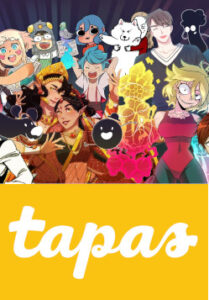10 Tips to Make Your Patreon Comics Successful
10 Tips to Make Your Patreon Comics Successful
While “The Depths” is still getting itself wet behind the ears when it comes to Patreon support, it’s been fun watching things progress for us. We’re certainly not in the Top 10 of the Patreon comics list, maybe not even 100, or 1,000. But we’re pleased that we have a strong following that’s stuck by us, and allows us to continue to create without decimating our savings geared towards paying our bills and art expenses on time.
We followed these steps to become more noticed as Patreon comics creators and we have to say they did wonders for us. Maybe they’ll help you too, we don’t know, and we certainly cannot guarantee anything. All we can safely guarantee is the only thing guaranteed to work 100% of the time, all the time, every day of your life…is nothing. Think about that while you read about our handy Top 10 tips below, in no particular order of importance.
1. Build your audience. Okay, we lied. This is probably the most important tip you can ever imagine. No one decides one day, “I’m going to open a Starbucks on Main Street,” then goes out, hires the construction crew and gets immediately to work. That’s not how it happens. Usually someone gets the idea that Main Street needs a Starbucks, talks to the city, gets some time with city builders and council, then puts together an assessment and gets survey feedback from people in the vicinity. Suddenly you have 1,000 people clamoring for you to build that Starbucks, and right away you can expect heavy, loyal business come opening day.
It works the same way for Patreon comics. Before you build it, get feedback. If you have a wickedly awesome comic you think will look great as a Patreon project, you have to be 100% SURE you’re going to have support. As an example, we already had a really good following on SoFurry and Furaffinity when we decided to launch a Patreon for “The Depths”. Because our comic is furry-based, it was helpful to already have a “built-in” furry audience who knew about and loved the characters. But maybe your Patreon comic will be about outer space, for instance. Your first order of business would be to spend a few months on sci-fi forums or chatrooms, and talk to everyone. Get feedback. Let them know your plan to bring a wild space opera to life in comic form and share images. Gain that audience so that when the project “opens”, you’ll already have excited customers.
So, in short, think about the main focus of your comic and then immerse yourself with the kind of people that you think would love it.
It’s that simple. *^^*
2. Engage the audience. This is a no-brainer so we won’t spend much time talking about this one. When someone comments on your Patreon, even if it’s just a short “thank you!”, make sure you reply. Nothing shows more respect than acknowledging someone’s thoughts, concerns, opinions, etc., and responding to them. We’ve seen way too many comics out there where creators lose touch with the audience and never reply to anything. Don’t be so high and mighty that you think you’re above replying. These are your customers. Make them happy.
3. Offer rewards but don’t go overboard. Take it from folks who learned that lesson the hard way. We started out offering as much as we felt we could – only to realize we didn’t have enough resources or time to do everything we promised. We envy those who manage to offer cool stuff like signed postcards, tangible things that can be sent through the mail and not online. But if you decide to go THAT route, remember that you’ll be paying for their shipping – and if you have customers in other countries, and a LOT of them, that can be a giant headache.
So, work out what your rewards will be and measure the time (and expenses) they could entail. These rewards should be attractive but reachable. Just as you have goals you’d like to reach, you’ve got an audience thinking about rewards they would love to get.
4. Audience participation is a must. Another no-brainer. Just as you interact with your audience, so too should you get them to interact with you. We love letting our Patreons decide things like who will appear in the next monthly pin-up, or running a poll to find out where “The Depths” story should go next – or even an off-topic poll asking folks to vote for their favorite Marvel comic movie. Make sure your Patreons know their participation is welcome and necessary to keep the Patreon sociable and friendly, and a great place to visit.
5. Include your best content. Your Patreons deserve the best comic work you have to offer, because they are essentially your “investors” for this. They should see everything first, and they should get “dibs” on your best work. It’s no different than showing a room full of investors a way cool upgrade of your invention. Your comic should be seen by them first, and in high quality as well, along with any other art you want to throw in, like pin-ups, cards, etc.
6. Update regularly. At least a post (either text or art) every few days. Why? Because people love an active Patreon. Not only that, if someone happens across your Patreon who isn’t a member, it looks good to them if they see a post done just a few days ago. We know of one Patreon that hasn’t updated in almost a year, and this is a huge no-no. New people won’t be interested in a Patreon that doesn’t have new or recent content. They’ll think you gave up or something.
7. Include a great selection of tiers. Obviously, we all want to make a lot of money in these projects. But there’s boundaries. Don’t ask for the moon when you can be satisfied with a few stars. The rewards, like we said, should be measured and feasible for you. A good rule of thumb that seems to work a lot with Patreon comics are leveled tiers for folks who: a) want to pledge but just a tiny bit and not often, b) want to pledge regularly, c) want to pledge more but not often, d) want to pledge more regularly, e) want to pledge a lot but not often, and f) want to pledge a lot regularly. You’re going to have to work out what kind of tiers you can offer to each of these groups and the included rewards. All we’re saying is that these are the groups you CAN cater to. Maybe you don’t want those who just pledge a tiny bit and not often, so you can leave that tier out. Get it? So, make your tiers cater to the kind of supporters you want.
8. Be brief but detailed in your goals, about you, etc. No one likes to come to a Patreon and see a project that takes forever and a day to read – and understand. Your comic has to speak for you, so let it. You SHOULD obviously have a website for your comic, so just steer people to the comic if they have questions. People need to know a little bit about you too and what makes you so awesome. Also, have strong detailed goals. For instance, if you get to $400 a month, you can afford to update your comic weekly and not just every other week. Make sure your Patreons know how important their pledges are to you.
9. Use tags in posts. We’re amazed how many people don’t. Even WE are new to tags really. When folks come to your Patreon, members or not, they like to know you’re organized. You have comic pages tagged as “comic”, or newsletters tagged as “news”, etc. Hell, add a “sex” tag if your comic page is particularly naughty. Give the Patreons choices. Tags allow them to peruse what they want to see easily.
10. Use social media. We can’t stress enough how important it is for you to show people your Patreon page, so have a link to it on your comic page, on your Twitter or Facebook, and have images and comic pages available on Pinterest, as examples. You won’t get a larger audience if no one knows enough to visit your Patreon page. So all of this content you have to offer should be available for non-Patreons to see – just limit what they can see until they pledge.
Best of luck! Remember, the only thing that we know works for sure is nothing. So, do something. Like the old “Zootopia” song goes, “Try everything!”
Because something’s bound to help you.
With respect,
Lani, Riff and KJ
(Was this helpful? Feel free to show us some love to by visiting our Patreon!)





 Bethellium
Bethellium Bun-Bun Art
Bun-Bun Art C-Chan's a Catgirl!
C-Chan's a Catgirl! Cat-Nine
Cat-Nine Delve
Delve Electric Fencer
Electric Fencer Elven
Elven Evon
Evon Heart Rock Titan
Heart Rock Titan Moonlace
Moonlace Rascals
Rascals The Monster Under the Bed
The Monster Under the Bed Visit Kemono Cafe
Visit Kemono Cafe Wukrii
Wukrii


Discussion ¬